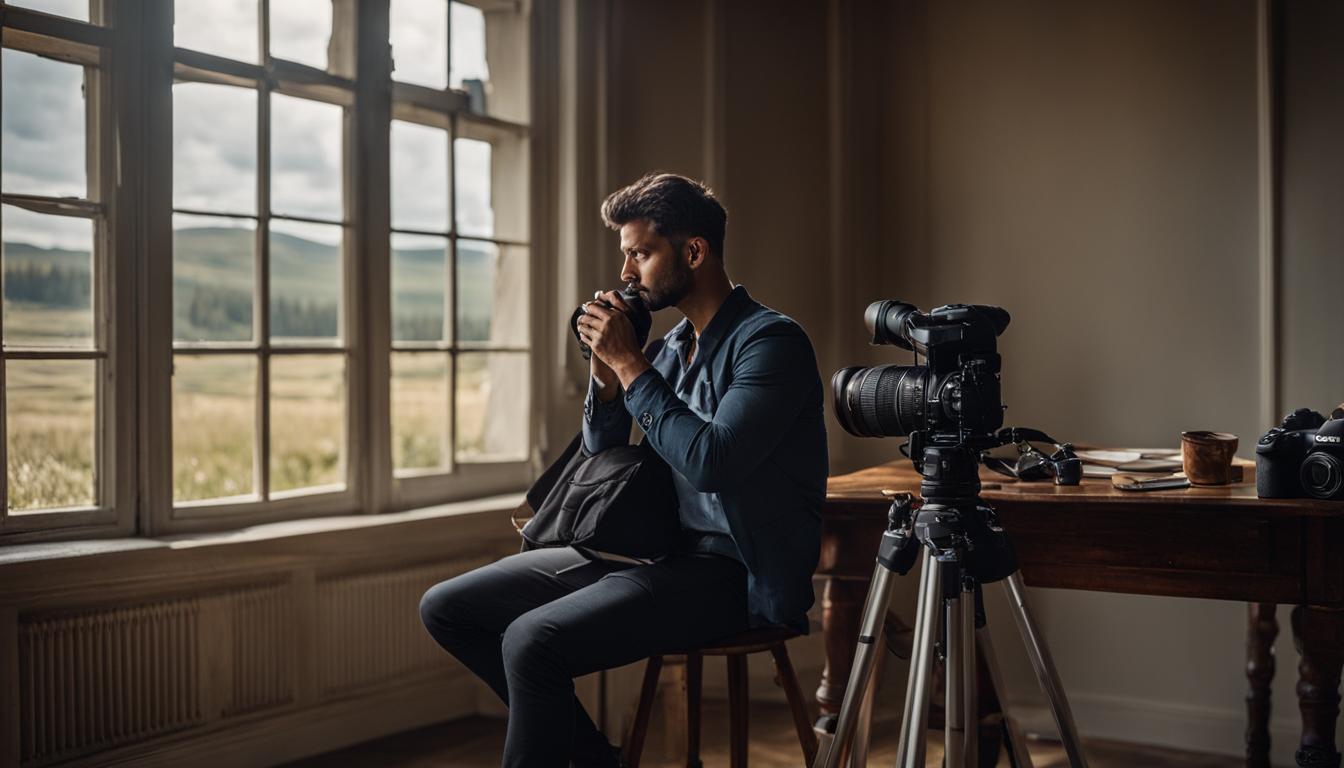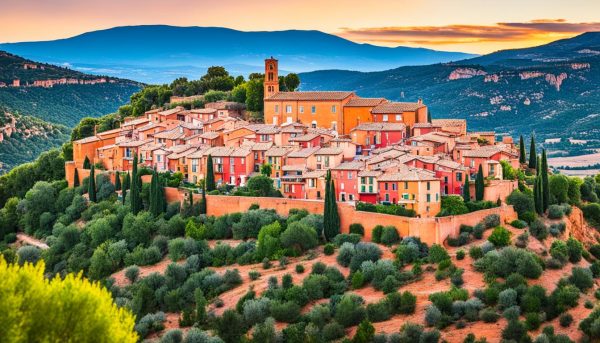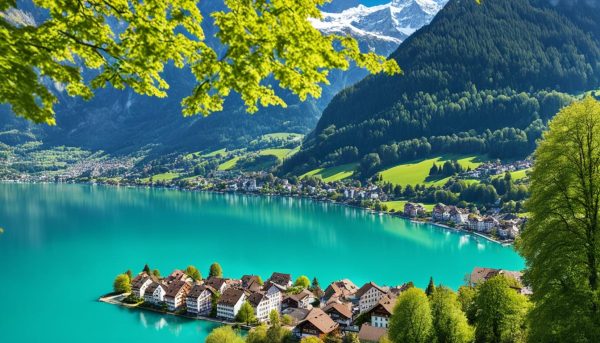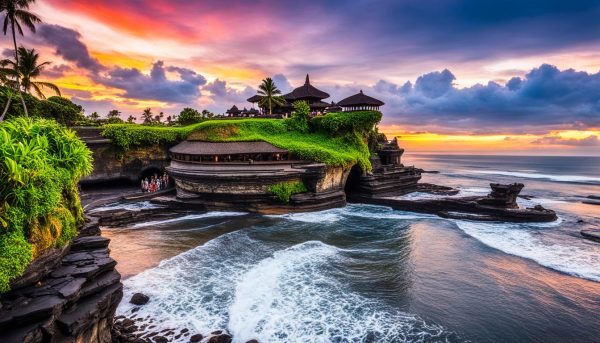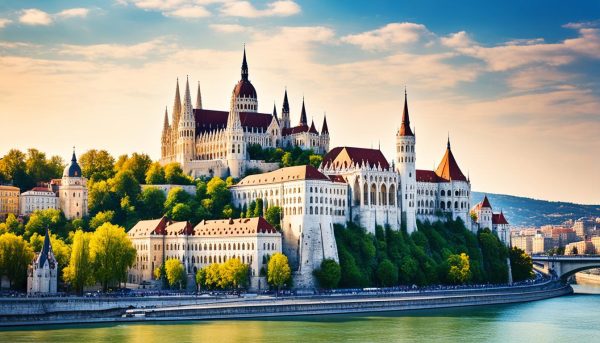In this exclusive interview, we have the pleasure of speaking with a celebrated landscape photographer to learn more about the art of capturing stunning imagery. With years of experience and a unique perspective on the natural world, our guest provides invaluable insights into their creative process and the inspiration behind their breathtaking photos.
Throughout our conversation, we explore the challenges and rewards of landscape photography, delving into everything from composition and framing to post-processing and editing. Whether you’re an experienced photographer or a curious amateur, this interview is guaranteed to inspire and inform.
Key Takeaways:
- Learn from the experience of a renowned landscape photographer
- Gain insights into the creative process behind captivating photographs
- Discover the sources of inspiration that drive artistic vision
- Explore the techniques used to master light, color, and composition
- Uncover the role of post-processing in creating stunning images
Capturing the Beauty of Nature
At the heart of landscape photography is the ability to capture the beauty of nature and preserve it forever. From stunning sunsets to rugged mountain ranges, the natural world offers endless possibilities for creating breathtaking imagery.
To achieve this, our featured photographer relies on a keen eye for composition and a deep appreciation for the world around them. They often spend hours scouting locations, waiting for the perfect light or weather conditions, and experimenting with different angles and perspectives to capture the essence of their subject.
But landscape photography also comes with its own set of challenges – from unpredictable weather to difficult terrain, there are many obstacles to overcome in order to get the shot. Our photographer embraces these challenges, viewing them as opportunities to push their creativity and capture something truly unique.
Ultimately, the goal of landscape photography is to convey the beauty and majesty of the natural world, inspiring awe and appreciation in those who view the final images. As our expert photographer says, “there’s nothing quite like capturing the perfect moment in nature and sharing it with others.”
Finding Inspiration in Unexpected Places
For our featured landscape photographer, inspiration can be found in the most unexpected places. It’s not just about capturing the beauty of well-known natural wonders, but also discovering the hidden gems that are often overlooked.
According to the photographer, “Sometimes the most spectacular scenes are not what people expect. I’ve found beauty in abandoned buildings, industrial areas, and even junkyards.”
It’s all about having a keen eye for detail and being open to new possibilities. Exploring lesser-known areas can also lead to unique perspectives and interesting compositions.
But it’s not just about physical locations. Inspiration can also come from personal experiences, emotions, and even other forms of art. The photographer noted, “I’m always inspired by music. The way it can evoke emotions and tell stories is something that I try to incorporate into my own work.”
So keep your eyes and mind open, and don’t be afraid to venture off the beaten path in search of inspiration for your landscape photography. You never know what unexpected beauty you might discover.
The Art of Composition
Composition is a crucial element of landscape photography, allowing the photographer to create a powerful visual narrative that draws the viewer into the scene. It involves the arrangement of elements within the frame, including foreground, middle ground, and background, as well as the selection of the focal point and the use of balance and symmetry to create a harmonious whole.
An essential aspect of composition is framing, which involves selecting the aspect ratio and positioning of the image within the frame. This can have a significant impact on the mood and emotion conveyed by the photograph.
Balance and Symmetry
Balance is an integral part of composition, ensuring that the elements within the frame are harmonious and do not overpower one another. It can be achieved through the use of symmetry, repetition, or contrast.
For example, a photograph may feature a tree in the foreground, balanced by a distant mountain range in the background. This creates a sense of depth and balance, drawing the viewer’s eye through the image.
Visual Narrative
The use of composition can help to tell a story through the image, conveying a sense of place and emotion. This can be achieved through careful placement of elements within the frame, such as leading lines that draw the viewer’s eye through the photograph.
Foreground elements can also provide a sense of scale and depth, creating a three-dimensional effect that draws the viewer into the scene. This can be enhanced through the use of framing, balance, and symmetry, creating a cohesive and compelling visual narrative.
“Composition is the foundation of a great photograph, allowing the photographer to create a powerful visual narrative that draws the viewer into the scene.”
By understanding the principles of composition, landscape photographers can create captivating images that convey a sense of wonder and emotion. It requires practice and experimentation, as well as a keen eye for detail and artistic vision. With these skills, a photographer can transform a landscape into a work of art, capturing its beauty and essence for all to see.
Mastering Light and Color in Landscape Photography
When it comes to capturing stunning landscapes, the use of light and color is essential for creating impactful and memorable images. As a master of landscape photography, our featured photographer understands how to harness natural light and create a color palette that evokes emotion and draws the viewer into the scene.
One of the key techniques that our photographer uses is to shoot during the “golden hour” – the period of time just after sunrise and just before sunset when the natural light is soft, warm, and diffused. This creates a beautiful golden glow over the landscape, highlighting details and textures that would otherwise be lost in harsher light.
Additionally, our photographer often uses filters to enhance and balance the light in their images. A polarizing filter can reduce glare and create richer, deeper colors, while a neutral density filter allows for longer exposure times, resulting in silky smooth water or clouds.
Color is also a vital element in landscape photography, as it can convey emotions and set the mood of the image. Our photographer is skilled at creating harmonious color palettes that enhance the scene and draw the viewer’s eye. They may even use color theory principles, such as complementary colors or warm/cool contrasts, to add depth and interest to the image.
“Color is a power which directly influences the soul.” – Wassily Kandinsky
As Kandinsky suggests, the use of color in art has the ability to impact the viewer on a deep emotional level, and our photographer understands this well. By mastering light and color in landscape photography, they are able to create images that not only showcase the beauty of nature, but also convey a sense of wonder, tranquility, or excitement.
So whether you’re shooting during the golden hour, experimenting with filters, or playing with color palettes, remember that mastering light and color is key to creating stunning landscape photographs that truly stand out.
Conveying Emotions through Landscapes
Landscapes have the power to evoke deep emotions within us. From the serenity of a calm lake to the ruggedness of a mountain range, every natural scene has the potential to tell a unique story.
As a landscape photographer, it is essential to capture and convey these emotions to your viewers. Through careful composition and attention to detail, you can create images that stir the soul and inspire the imagination.
But how do you go about capturing these emotions in your landscapes?
Understanding the Elements
Before you can convey emotions through your landscapes, you must first understand the elements that contribute to these feelings. For example, bright colors can evoke feelings of joy and happiness, while muted tones may create a sense of melancholy or nostalgia.
Similarly, the placement and size of objects within a scene can influence the emotional response of the viewer. A small bird in an expansive sky can create a sense of freedom and isolation, while a towering tree can provide a sense of stability and grounding.
Telling a Story
Great landscape photography is not just about capturing a beautiful scene; it’s about telling a story. By infusing your images with emotion, you can create a narrative that draws the viewer into the scene and allows them to experience it in a more profound way.
Consider the story you want to tell with your image. What emotions do you want to convey, and how can you use composition and color to bring that story to life? By answering these questions, you can create a more impactful and engaging image.
The Power of Contrast
One effective way to convey emotion in your landscapes is through the use of contrast. By juxtaposing elements that contrast with one another, you can create tension and drama within your composition, evoking strong feelings in your viewers.
For example, a bright red flower against a muted green background can create a sense of vibrancy and energy. Similarly, the contrast between light and shadow can create a sense of depth and mystery in your image.
Bringing it All Together
Conveying emotions through landscapes is truly an art form. By understanding the elements that contribute to these feelings, telling a compelling story, and using contrast to create drama within your composition, you can create images that resonate with your viewers at a deeper level.
As our featured photographer demonstrates through their stunning images, landscape photography has the power to evoke wonder, tranquility, and excitement. Harnessing that power requires a combination of technical skill and artistic vision, but the results are truly breathtaking.
The Role of Post-Processing in Landscape Photography
While capturing the perfect shot is crucial in landscape photography, post-processing and editing are equally important in enhancing the beauty and impact of the image. Our featured photographer emphasizes the need for a subtle touch in editing, ensuring the final result looks natural and authentic.
One of the primary tools used in post-processing is Adobe Lightroom, a software that allows photographers to adjust various aspects of the image, including exposure, contrast, and color. Our expert explains that the key is to avoid over-editing, as this can result in an artificial, HDR-like effect that detracts from the genuine beauty of the landscape.
Another essential aspect of post-processing is sharpening, which enhances the details and textures in the image. However, our photographer warns against excessive sharpening, which can create a harsh, unnatural look.
Before and After: The Power of Editing
To showcase the transformative impact of post-processing, our expert shares a before-and-after example of a landscape image. In the original photo, the colors are flat and dull, and the details of the trees and rocks are not prominent.
After applying subtle adjustments in Lightroom, the final image comes to life, with vibrant colors, enhanced details, and a more balanced composition.
“Editing is not about making a subpar image look better, it’s about bringing out the true beauty that was already there, but perhaps hidden beneath shadows or dulled by an overcast day.”
In conclusion, post-processing and editing are essential tools in landscape photography, allowing photographers to showcase the natural beauty of the world while also adding a personal touch to their images. However, it’s vital to use these tools judiciously, avoiding excessive manipulation and preserving the authenticity of the scene.
Nurturing a Lifelong Passion
Our featured landscape photographer has undoubtedly achieved great success in their career, but their journey has not been without challenges. It is their unwavering dedication and passion for the art of landscape photography that has brought them to where they are today.
From a young age, our photographer discovered their love for nature and adventure, always eager to explore the great outdoors. As they grew older, their passion for photography developed, and they found a way to combine their two greatest interests.
Despite setbacks and obstacles along the way, our photographer persevered, constantly striving to improve their craft and bring their artistic vision to life. They found inspiration in the work of other photographers, in the beauty of the natural world, and in the support of fellow artists.
Through years of dedication and hard work, our featured photographer has honed their skills and found success in the highly competitive field of landscape photography. And yet, they remain humble and grateful for the opportunity to continue to do what they love.
Conclusion
As we come to the end of our interview with the celebrated landscape photographer, we are left with a greater appreciation for the beauty of the natural world and the artistry required to capture it.
Through our discussion, we have learned about the creative process, the dedication and passion required to excel in landscape photography, and the technical skills necessary to bring out the full potential of an image.
Most importantly, we have been inspired to explore and celebrate the world around us, finding hidden beauty in unexpected places and conveying a sense of emotion through our photographs.
Let us take the lessons learned from our expert photographer and apply them to our own journeys as we capture the magic of landscapes and share our unique perspectives with the world.
FAQ
How can landscape photography capture the beauty of nature?
Landscape photography allows us to document and showcase the awe-inspiring beauty of the natural world. It captures the grandeur of landscapes, the intricate details of flora and fauna, and the ever-changing elements that make our planet so remarkable.
Where does a landscape photographer find inspiration?
Inspiration can be found in unexpected places. Our featured photographer draws inspiration from exploring remote locations, connecting with nature, and observing the play of light and shadows. They seek out unique perspectives that evoke emotions and tell compelling stories through their images.
What is the art of composition in landscape photography?
Composition is a crucial aspect of landscape photography. It involves carefully arranging elements within the frame to create a visually pleasing and balanced image. Our expert photographer shares insights on framing, leading lines, rule of thirds, and other techniques that help create a captivating composition.
How can lighting and color be effectively utilized in landscape photography?
Mastering natural light and understanding color theory are essential for creating impactful landscape photographs. Our renowned photographer discusses techniques for using different types of light, such as golden hour or dramatic stormy skies, to enhance the mood and atmosphere of the scene. They also explore how to use color to evoke emotions and create a harmonious visual experience.
What is the role of post-processing in landscape photography?
Post-processing is a vital part of the creative process for many landscape photographers. It involves editing the images to enhance their visual impact and bring out the artist’s vision. Our expert shares insights into their post-processing workflow, including techniques for adjusting exposure, enhancing colors, and fine-tuning details while maintaining the authenticity of the scene.
How can landscapes convey emotions?
Landscapes have the power to evoke a wide range of emotions, from tranquility and serenity to excitement and awe. Our featured artist discusses the techniques they use to capture and convey emotions in their images, including the use of composition, lighting, colors, and the selection of subjects that evoke a particular mood.
What does it take to excel in landscape photography?
Exceling in landscape photography requires dedication, perseverance, and a lifelong passion for the craft. Our esteemed photographer shares their journey from humble beginnings to success, emphasizing the importance of continuously learning, exploring new techniques, and nurturing a deep connection with the natural world.

